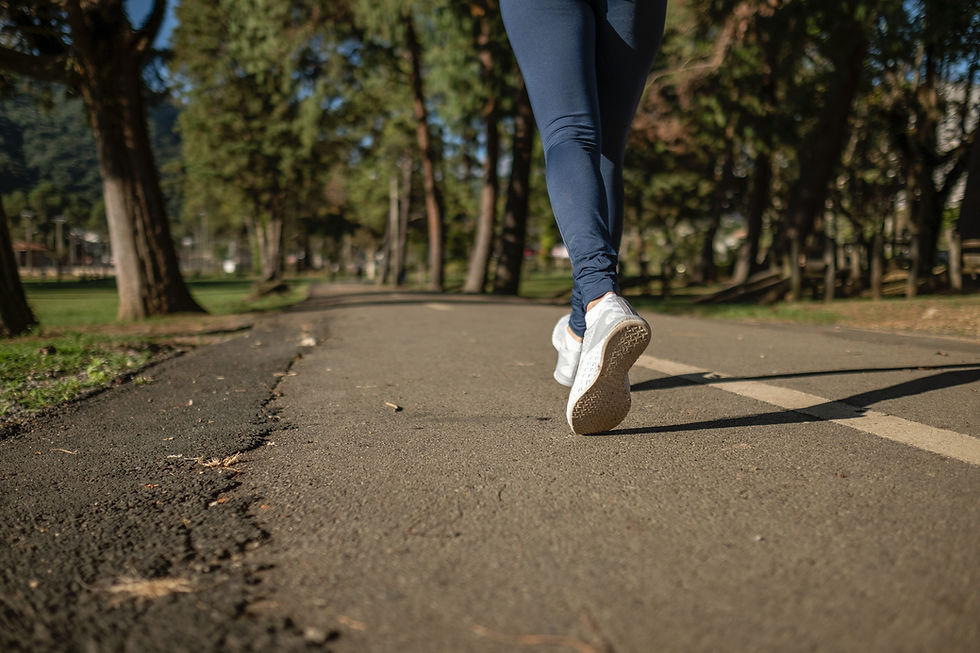Habits and Hypermobility: Tips for improving your quality of life with small tweaks to your day
- Linda Bluestein, M.D.

- Oct 13, 2022
- 6 min read

Is your quality of life reduced due to hypermobility? Do you find it difficult to incorporate and sustain new lifestyle changes and habits?
Being bendy can impact every aspect of one's life and it can be challenging to make meaningful gains. Many medical professionals lack the understanding needed to grasp the significance of these complex conditions, however some people (like Megan Barker, DPT) offer more diverse services, using their multiple hats to improve functional capacity for their clients.
Read on for some helpful tips for changing habits with hypermobility. Enjoy!
-Linda Bluestein, MD
How can daily choices affect your quality of life with symptomatic hypermobility (SH) whether you have one of the Ehlers-Danlos Syndromes (EDS) or hypermobility spectrum disorder (HSD)?
You’re highly motivated to feel better and get more in control of your health. When you have EDS or HSD, it can be hard to know what to try, what is safe and effective, and what to prioritize. It can be overwhelming and confusing! One big way symptomatic hypermobility is optimally managed is through lifestyle habits alongside medical management. As a physical therapist (physiotherapist) and health coach, I’d like to give you a sneak peek into the areas I focus on the most with my clients to help them reach their goals, feel more in control of their symptoms, and improve their overall quality of life.
First, use a systematic and gradual approach.
So often, we get excited about making a change or trying something new with high hopes of making big improvements. We enthusiastically try adding in four new aspects to our day or overestimate how much we’re ready to handle with our wonky body. This is so natural, and yet, it makes it more difficult to know what was helpful and what wasn’t. While we can’t control all aspects of how our day goes, adding new habits, treatments, or tools, one at a time and slowly, can give us a clearer idea of how to adjust our approach. Watch for signs like change in heart rate or HRV (heart rate variability) over time, as well as symptoms like pain and fatigue, for example, to decide how to tweak your approach.
Consider some lifestyle ideas…
How are you incorporating movement?
I always recommend seeing a hypermobility experienced physical therapist/physiotherapist to gain a deeper understanding of how your body is moving. If you’re a dancer, try to see someone who also understands dance and it's specific demands. Are there muscle imbalances, weaknesses, and/or inefficient compensation patterns? Guidance around safe and effective movement is a crucial starting point.

Consistent movement practice
One of the main areas I focus on is consistent movement. That doesn’t mean that things need to look the same every day, or that missing a few days is the end of the world. What it means is building movement into your life in a sustainable way so it becomes as consistent as possible and can be progressed over time. Look for something that you get some pleasure from. Is it taking a walk outside, taking dance classes, taking a bike ride, or a combination of a few things each week?
It’s so natural to fall into an all or nothing mindset, but going slow (really slow) to build up a movement practice can be a great way to develop more body awareness, strength, endurance, and confidence. With hypermobility, there is really no such thing as working up too slowly.
Moving often
Move often during the day. Even when we don’t feel like it, our bodies need to change position. Even the most “ideal” posture will not be helpful to stay in for long periods of time. It’s helpful for our joints, muscles, circulation, lymphatic flow, and more. Bendy bodies (folks with hypermobility) need to change positions often!
Finding ways to make movement more comfortable
Movement can be challenging when you have hypermobility, pain, fatigue, and a host of other symptoms, so using supports can make it more possible and comfortable. Supports like compression sleeves or garments, braces, and taping may be helpful options to try with professional guidance. These can also change over time as you learn more about how your body moves most effectively.
Are you prioritizing rest?
We can’t forget how important rest is. While consistent and frequent movement is helpful, rest is vital to be able to move in a comfortable and sustainable way. Rest is also how you make gains physically and mentally. Rest includes many different aspects. Have you considered if you are adequately resting physically, mentally, and emotionally? I like to think about this for the structure of a day as well as the week. Not every day will allow for an ideal structure but planning can be helpful make adjustments to support your goals. Balance is challenging to find but small changes to your day can help to find the level of exertion and rest that works for you, remembering that it’s likely ever evolving.

How and when are you viewing light during the day?
An important recommendation for bendy bodies is to get lots of light exposure upon waking. When you’re in pain and fatigued, the last thing you probably think to do is open up your blinds or get outside. But getting sunlight in your eyes can be so helpful for many aspects of health. Viewing sunlight early in the day (ideally not through a window and without sunglasses) can help set your circadian rhythm, alerting your brain to when it’s time to be alert and when it’s time to be asleep.
It can be helpful to also minimize light exposure in the evening. Once again, we want to tell our brain what time of day it is, so we can feel sleepy when it’s time to go to bed. In the evening, it’s helpful to dim lights and limit exposure to blue light (computer, phone, TV) within a couple of hours of sleep.
Do you have a routine built into your day and week?
Energy conservation can be so vital when you have EDS or HSD and having to figure out what comes next can use some of that energy! Consider building consistent routines into your day so there are predictable aspects that take little thought and signal to your brain what happens when. This could look like a morning routine for the first hour of your day, or a bedtime routine to wind down, or maybe it’s a typical structure to your day with adjustments for when new tasks or appointments pop up.
This reminds me of a ballet class. You know the general structure of the class and what's likely to happen when. Not every class is the same but the general structure can be comforting. This predictability in routines can be calming and builds even more consistency into the habits you’d like to build.

Are you engaging in your passion or purpose in any way possible?
Chronic illness and pain can be all consuming. It can be time consuming and exhausting, requiring prioritizing basic necessities and leaving hobbies and joyful activities behind. That may be possible in the short term, but long term we all need to engage in enjoyable, purposeful activities to feel fulfilled. Do you love to dance but can’t participate the way you used to? Consider how you could engage with this love in even a small or modified way. Is it by taking a virtual class and modifying the movement for your body? Is it listening to music and choreographing a dance in your mind? Is it going to a theater to watch a dance performance? Brainstorm ideas that could apply to your passion. We all need any outlet of enjoyment outside the day to day survival mode. It can take time to find what this looks like but the effects can be remarkable.
Are you giving yourself compassion?
Are you taking time to appreciate how much you do every day? How much you accomplished this week? Have you celebrated your small or big wins? Have you felt compassion for yourself when it’s been a hard week and it’s all feeling really difficult? It’s important to pause and appreciate where you are (including the positive, negative, and neutral). We often beat ourselves up for not finishing our to-do list, reaching a goal, or being consistent. What are we gaining from that? What if instead we try self compassion, appreciating what happened, and planning how we’d like things to go moving forward. Patience is a big part of managing symptomatic hypermobility, and to have patience, we have to have self compassion.
While these are likely not new concepts to you, consider reflecting on each one and if any tweaks to your current approach could be helpful. Take it slow, observe any changes, and build from there. Positive change is truly possible!

Megan Barker, PT, DPT, OCS is a Doctor of Physical Therapy and Certified Women’s Health Coach. Megan grew up dancing and found physical therapy when she was injured her senior year of college. Through this experience, she found her passion and drive to help others get the care they so deserve. She now has a mobile, private practice in Northern Virginia. She specializes in supporting dancers and individuals with symptomatic hypermobility, including EDS and HSD. In her health coaching role, she works with clients worldwide, helping them return to movement and feel more confident in their management of pain and fatigue. You can find out more at www.rhythmhealthllc.com. Follow her on Instagram too @hypermobilityhealthcoach!



Thank you so much for inviting me to write this guest post!
Is one of these easy for you to integrate into your day and week? Is one much more challenging? Would love to hear!